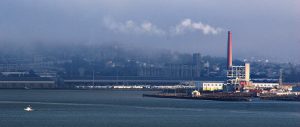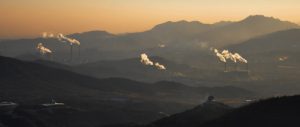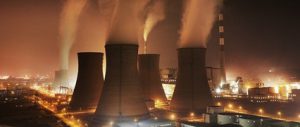China’s three main carbon markets – the Beijing Environment Exchange, Shanghai Environment Energy Exchange and Tianjin Climate Exchange – were all formed within two months of each other, towards the end of 2008. At that point, the European Union’s Emissions Trading System (EU-ETS) was still struggling to recover from a crash a year previously, which had seen the price of carbon allowance plummet from 30 euros to just a few cents.
The World Bank estimates that carbon trading globally could be worth US$3.5 trillion by 2020, meaning it would overtake oil to become the world’s largest market. Spurred by this rosy outlook, China had 100 carbon exchanges in operation or under preparation by late 2011. Most were quickly taken over by speculators, however, while genuine carbon trading remained rare. None of the three main exchanges saw a single real carbon trade in its first year of operation.
On 29 October last year, the National Reform and Development Commission (NRDC), China’s top economic planner, announced that carbon trading trials would run in seven of the country’s most important cities and provinces: Beijing, Tianjin, Shanghai, Chongqing, Guangdong, Hubei and Shenzhen. Each of these locations already has its own carbon emissions exchange. (Compared with the existing exchanges, these trial platforms will enjoy policy-created-demand and guaranteed customers, and so in theory be free from worry about their sales performance.)
But as part of a clampdown on dubious trading practices, on November 11 last year the State Council – China’s highest administrative organ – tightened regulations on all of the country’s exchanges, from equity exchanges and commodities exchanges to those trading "cultural artwork". The rules, which were intended to reduce financial risk, included a ban on trading in shares of assets (except from stocks and permitted financial products) which effectively blacklisted the core business of carbon markets.
The two almost parallel announcements highlight the government’s lack of coordination on carbon-markets policy. As there is no physical commodity, carbon emission allowances are always traded as shares. The State Council proclamation was in clear conflict with the fortnight-old NDRC document. But, in February, state news agency Xinhua reported in a local news that “The Shanghai United Assets and Equity Exchange has been designated by the NDRC as an environment and energy trading platform,” indicating that the threat posed by the policy restrictions of the State Council document had been overcome.
But those licensing issues are nothing compared to the real problem facing carbon markets: how to make tradable emissions permits appropriately scarce. The 2007 crash in the EU-ETS market was caused by a glut of allocated emission rights, far exceeding demand. There was next to no scarcity.
In 2008, the European Union knocked back proposals from member states for lax emissions caps during the scheme’s second phase (2008-2012) and ultimately agreed on an average cut of 7% below 2005 levels. But the European debt crisis has dealt a heavy blow to the carbon price, as well as the wider economy: demand is again much lower than anticipated, and this has impacted investment in low-carbon technology. The EU, with its sluggish economy, has repeatedly failed to accurately predict future emissions, demonstrating how hard it will be for China to set similar targets.
The international media, however, has been less interested in the challenges facing China’s seven carbon-trading trials than in what their existence might imply about Chinese climate policy. These pilots are meant to “calculate and cap total greenhouse gas emissions”, and have been widely interpreted as a prelude to China setting a national emissions cap, something that would be of huge significance.
This interpretation is both right and wrong.
The Chinese government’s 12th Five-Year Plan includes targets for energy-intensity and carbon-intensity cuts of 16% and 17% respectively between 2010 and 2015. In December last year, the State Council formally set reduction targets for provincial-level governments. But in the second half of 2011, the National Energy Administration also started looking at capping total energy consumption. And it’s a short step from energy consumption to carbon emissions. Currently, the total primary energy consumption cap for 2015 has been set between 4 billion and 4.2 billion tonnes of coal equivalent, while there is also a total electricity consumption target of 6.4 trillion kilowatt hours.
Provincial targets based on these figures have already been handed down. These figures show that caps at national level are actually being set slightly earlier than those at the trial locations. This means that the targets set at those trial locations will not lead to national level targets.
Moreover, carbon trading pilots don’t have to involve setting local emissions targets. There are a couple of reasons for saying this. First, look at the EU-ETS. The initial stage of that scheme only covered certain large emissions sources, accounting for about 40% of total EU emissions. Coverage did not expand until the scheme moved into its second phase. Similarly, China’s trials do not need to set targets for their regions as a whole, but just for major emitters in key industries.
Second, differences between carbon trading models determine whether or not an overall emissions target is needed. In its first phase, the Australian regime – which comes into force on July 1 this year – will use a fixed price in kind of “carbon tax”. The country’s most polluting companies will pay AU$23 (145 yuan) for every tonne of carbon dioxide equivalent they emit, a price set to increase by 2.5% annually. But running a system like this requires the ability to monitor and verify emissions data, the aspect of carbon trading China needs to strengthen most.
A big question mark still hangs over the accuracy of China’s energy data, in particular its data on coal, use of which is highly decentralised. Without industry-level figures, the ability of local governments to produce reliable energy statistics is seriously jeopardised – weaker, even, than that of central government. Often, only rough estimates are possible.
Worse, it can be hard to get numbers from large state-owned enterprises (SOEs) because they are not under local government control, or because they say the data is “too sensitive” to release. This makes it tough for local government to verify figures, and if figures can’t be verified, then any talk of breaches or penalties is empty. Carbon trading trials based on some key industries and major emissions sources are therefore more realistic and more likely to succeed than a more universal approach.
Carbon-intensity targets can also be linked with GDP growth rates as higher economic efficiency against emission will result in lower intensity. This is a more flexible approach than setting absolute carbon targets. It’s also a more realistic approach for China, considering the EU’s past two failures. Against the backdrop of China’s transforming economy, the carbon market is a flexible and cost effective policy tool that allows local governments room to manoeuvre when allocating emissions reduction targets.
If the visible hand of policy can see its target and the invisible hand of the market can be regulated, China’s carbon trading trials will have a good chance of success. But for carbon markets overall the real threat is the very political will that creates them. Carbon markets worldwide crashed almost simultaneously in 2011; not a coincidence caused by failings in market design, but the result of changes in the global policy direction.
At the end of 2010, the largest carbon market in North America, the Chicago Climate Exchange announced the closure of its cap-and-trade market. The wider context of this change was the fact that the Democrats had performed poorly in the mid-term elections and there was scant hope of the Clean Energy and Security Bill passing a Republican Senate. This meant there was no chance of near-term implementation of the bill’s emission targets or a cap-and-trade system. California’s carbon market, due to start operating in 2013, will be the final stronghold of those who favour a strong American response to climate change.
Meanwhile, the EU sovereign debt crisis was worsening and economic activity slumped. Supply of carbon emission allowance again exceeded demand and the carbon price headed south. The greens pushed hard for cancellation of large quantities of excess quotas, while heavy industry lobbied just as hard against it. In 2012, phase two of the EU-ETS was drawing to a chaotic close – not quite what the Europeans, keen to provide a global model, had hoped for.
They aren’t alone in disappointment. The only carbon market in which developing nations participate isn’t running smoothly either. Although it was agreed at the UN-led climate change summit in Durban last year that the Kyoto Protocol would continue into a second commitment period, there is still no global emissions target that could support an active carbon market.
The price of Certified Emissions Reductions under Kyoto’s Clean Development Mechanism (CDM) has slid from 25 euros (200 yuan) to 5 euros (40 yuan). European carbon traders have even refused to pay some Chinese CDM project owners their contracted price, demanding to renegotiate or even seeking out loopholes in the contract. This is a grave blow to hopes for a global climate market and has exacerbated mistrust of carbon markets among developing nations.
Carbon markets trade in a virtual product, created by policy alone. And so policy stability is essential. The outlook for climate change talks is bleak; the EU and American economies are in the doldrums; and economic targets are taking precedence over climate goals. There is no question that China’s ability to provide a stable demand for emission cuts will be crucial to getting its carbon markets up and running.
And while policy in China is more consistent than in many other nations, there is another Chinese disease to worry about. Policy should be used to create markets not to control them, but in China markets are often mere adjuncts to policy. Either there is no regulation and the invisible hand runs wild, or there is too much and the invisible hand is handcuffed.
The Chinese stock market offers one of the strangest examples in that it has become a reverse barometer of the Chinese economy; it keeps going down while the Chinese economy is booming. Perhaps this is why Shenzhen was the only non-provincial level location picked for a carbon trading pilot: its two decades’ experience running a national stock exchange might come in just handy.
Wang Tao is a resident scholar in the Energy and Climate Program at Carnegie Tsinghua Center for Global Policy.
This article is published as part of our Green Growth project, a collaboration between chinadialogue and The Energy Foundation.
Homepage image by Greenpeace


